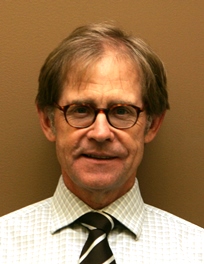
by Murrel Bland
About 135 public officials from Wyandotte County were members of the Ku Klux Klan during the 1920s.
That was what Tim Rives reported when he spoke at a quarterly meeting Sunday of the Wyandotte County Historical Society at the Wyandotte County Museum, Bonner Springs.
Rives, who is a supervisory archivist at the Eisenhower Presidential Library, Abilene, Kan., has written extensively about the Klan and its influence in Kansas and Wyandotte County.
Rives first learned of the Klan’s activities when he was doing research for his master’s thesis in history at Emporia State University. He discovered that the Klan had paid for renting space in the Methodist Church in the tiny town of Redding near Emporia.
As he did more research on the influence of the Klan, it led him to Wyandotte County where there were several Klan chapters. The largest of these chapters was Wyandotte Klan No. 5. Other chapters were in other communities including Rosedale, Argentine, Armourdale and Bonner Springs.
Klan members had to be white, Protestant and American-born. They were opposed to Roman Catholics, Jews and blacks. The leadership was typically white middle-class men who owned small independent businesses.
When grocery stores owned by Jews moved into Kansas City, Kan., the Klan encouraged public officials to enforce “blue” laws that prohibited them from being open on Sundays.
The most prominent public official who was a Klan member was Don McCombs, the Kansas City, Kan., mayor from 1927 until 1947. This is when the Klan reached its pinnacle of local power, according to Rives.
The Klan’s housecleaning of City Hall in 1927 coincided with a civic improvement program that the Chamber of Commerce launched. Many of the 135 elected officials who were Klan members also were Republican precinct committeemen.
Rives said many of the Klan members also were members of mainline Protestant churches, including Methodists and Baptists, and fraternal lodges including the Masons.
There were disputes among Klan members as several dropped out after the 1920s; those leaving the organization protested some of the more radical discrimatory practices.
One of the Klan No. 5 members was Thomas Younger Baird, who owned bowling alleys and billiard halls. Rives said it was ironic that Baird also was one of the owners of the Kansas City Monarchs black baseball team.
The Klan put pressure on M.E. Pearson, the superintendent of the Kansas City, Kan., School District, to cancel plans that called for black and white students to march in a parade in 1922.
The Eastern Kansas Register, at that time the name of the official newspaper of the Kansas City in Kansas Roman Catholic Diocese, crusaded against the Klan.
Rives said it is uncertain how many members the Klan had in Wyandotte County. He said his best estimate was about 4,000. However, many more than that showed up at Klan rallies, drawing on several other Kansas chapters. After 1920, Klan membership dropped as certain members dropped out because of more radical discriminatory practices.
The Historical Society on Sunday presented its annual awards for volunteer service. The Garland M. Smith Award went to Hal Walker, a former society president and chief counsel for the Unified Government. Walker now serves as a Unified Government commissioner. He was recognized for his support of the museum and society programs. He lives in Kansas City, Kan.
Chris Haynes was recognized as the Volunteer of the Year. She is a volunteer who works in the Museum gift shop. She lives in Shawnee.
Gene Chavez received the Historian of the Year Award. He is an adjunct professor at Webster University—Kansas City. He was recognized for his work in preserving the history of Hispanic culture. He lives in Shawnee.
The American Legion Post 213 in the Argentine community received the Margaret Landis Award. Mexican-Americans established this post when they were denied membership in all-white posts.
The V.J. Lane Award went to the 1951 Flood Reunion Committee. This organization remembers those who experienced the flood and meets regularly. Most of its members are from the Armourdale and Argentine communities.
Two Meritorious Service Awards went to two persons posthumously. Those recognized were Suzanne Thompson Knowles and Madelyn Eismann Fotovich. Knowles was recognized for her efforts in preserving black history, particularly with the African Methodist Episcopal Church. Fotovich was a longtime society volunteer who served on the calling committee.
Dorothy Hart Kroh received the Virginia Smith Glandon Award which recognizes outstanding contributions to history by a woman. Kroh was recognized for her efforts in the signage of historic trails and a project that preserved comments from persons across Kansas who wrote about a day in their lives in October 2001. She lives in Merriam.
Daniel Serda received the Ethnic History Award. Serda, an urban planner, is the director of the Kansas City Design Center. He was recognized for his historic preservation efforts, particularly in the Argentine community. He lives in Kansas City, Kan.
Murrel Bland is the former editor of The Wyandotte West and The Piper Press. He is a member of the board of directors of the Wyandotte County Historical Society.

There were no “Jews” opening grocery stores, there may have been some Jewish but not “Jew.”
Where is the klan now?